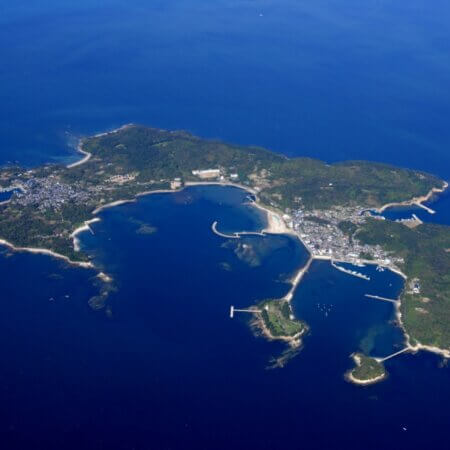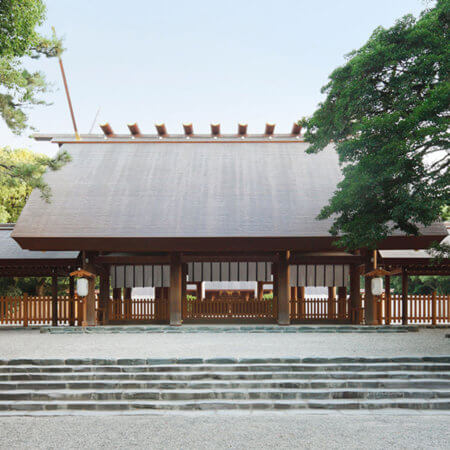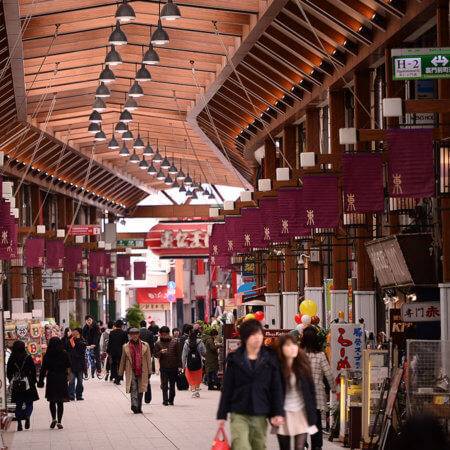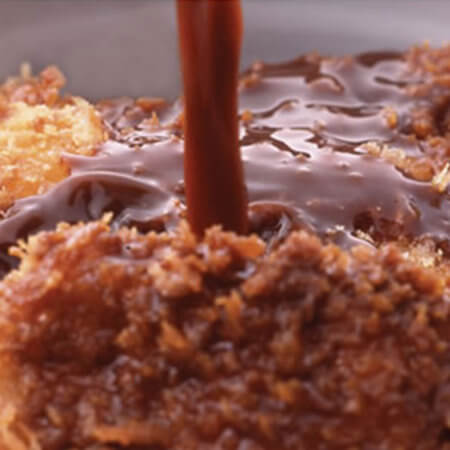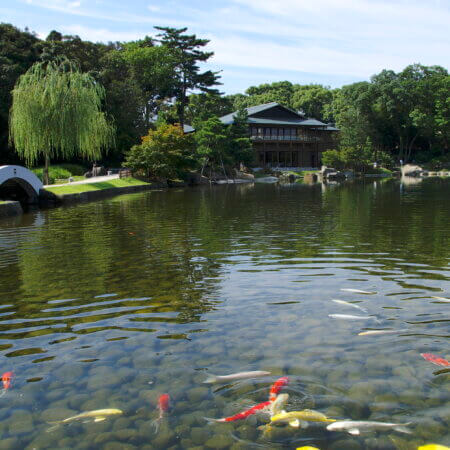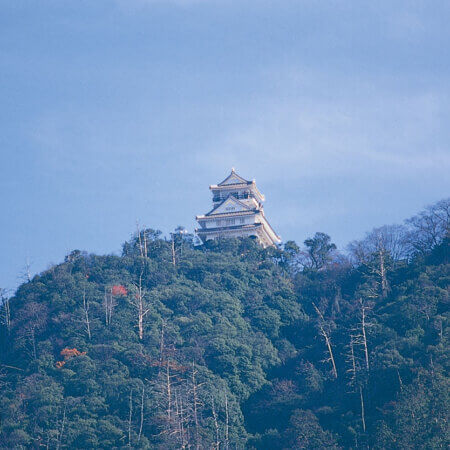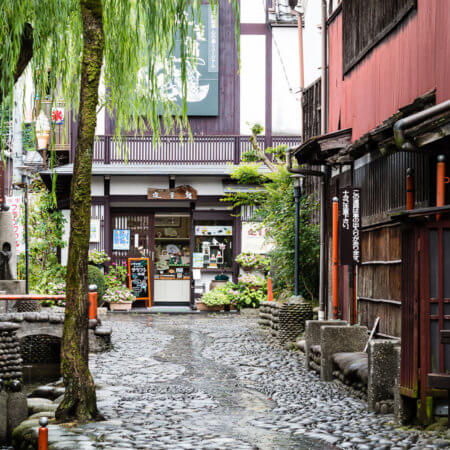【Nagoya Castle】A Castle with Deep Connections to Oda Nobunaga and Tokugawa Ieyasu
- PREFECTURE
- AICHI
- INTEREST
- HISTORY
(Last entry for Hommaru Palace and the Nishinomaru Okura Johokan Treasure Museum is 4:00 p.m.)
Nagoya City Senior Citizens - 100 yen
Junior high school students and younger - free
CONTENT
One of the largest castle towers in history, it is designated as a special historic site of Japan

The castle tower is a five-story building with a basement, boasting one of the largest floor areas in history. As a castle, it was designated as the number one national treasure. Later, major buildings, including the Honmaru Palace, were destroyed by World War II. However, in 1952, Nagoya Castle was designated as a special historic site of the country, as one of the major castles in Japan.

In 1959, the five-story main castle tower (about 48 m) topped with golden dolphins and the small castle tower (about 24 m), were rebuilt. In 2018, restoration work on Honmaru Palace, which took 10 years, was completed, and it was fully opened to the public. In addition, the Nagoya Hospitality Warriors, which led the nationwide boom in samurai squads, welcomes visitors daily inside the castle, allowing everyone to learn about Nagoya Castle and Nagoya’s history in an enjoyable way.
As of February 1, 2023, the castle tower is closed to address its low earthquake resistance.
The restored masterpiece of early modern castle palaces, Honmaru Palace, is a must see!

The Nagoya Castle Honmaru Palace was built in 1615 by order of Tokugawa Ieyasu as the residence of the Owari feudal lord and the administrative center of the clan. Designated as a former national treasure along with the castle tower, it was known as one of the most famous castles. Unfortunately, most of the building was destroyed in an air raid in 1945. Based on first-class historical materials and using top-notch techniques, the restoration work aimed to revive the palace’s elegant appearance and took about 10 years to complete.
The first phase of the public opening in 2013 featured the entrance and front drawing room. The first thing to notice about this area, which is frequently used by visitors, is the tiger and leopard wall paintings at the entrance, which is where visitors pass through first. These paintings are particularly popular with visitors because they can feel the majestic presence representing the prestige of the Tokugawa clan. Also, in the front drawing room, especially in the highly formal upper area, there are wonderful decorative metal fittings and designs on the floor, the attached drawing room, the staggered shelves, the ornamental shelves, and the ceiling that are also worth paying attention to.
The second phase of the public opening in 2016 featured the meeting room, lower dining room, and upper kitchen. This inward-facing area was used for meetings and banquets where the feudal lord met his family members and relatives. The wall paintings here are different from those in the entrance, depicting seasonal scenes, famous places, and customs of artisans, and are characterized by their calm atmosphere. In the third phase in 2018 where it was fully opened, the Jorakuden was unveiled. This is the most luxurious and magnificent building and was constructed for the Edo Shogunate’s general to stay in. You’ll be overwhelmed by the fusuma screen paintings and ceiling panel paintings by the Kano school, intricate carvings, and decorative metal fittings.
Don’t miss the symbol of Nagoya Castle, the magnificent and luxurious golden Shachihoko!


In 1612, golden Shachihoko were placed on the largest castle tower in Japan upon its completion. The height of the Shachihoko at that time was about 2.57 meters, and 215.3 kg of gold (equivalent to 1,940 large Keicho gold coins) was used for the pair. The Shachihoko were not made of gold leaf but were shaped using gold plates, which is a distinctive feature. The magnificent and luxurious appearance of the golden Shachihoko was said to demonstrate the power of Tokugawa Ieyasu and the authority of the Owari Tokugawa family.
The Shachihoko is an imaginary creature with the face of a tiger, the body of a fish, multiple sharp spikes on its back, and a tailfin curving upward toward the sky. Since ancient times, the Shachihoko has been revered as a divine beast of fire prevention and water and as a guardian deity of buildings, as wooden architecture was the norm in an era when fires were a major threat. The Shachihoko, restored after World War II, are designated as male on the north side of the castle tower and female on the south side. The male measures 2.621 meters in height, weighs 1,272 kg, and has 112 scales. The female measures 2.579 meters in height, weighs 1,215 kg, and has 126 scales. Instead of gold plating, gold plates are attached to the surface. Another distinctive feature is that the male is larger, while the female has more gold scales, creating a dazzling appearance.
Although the weight and number of scales differ between the male and female Shachihoko, the easiest way to distinguish them is by the openness of their mouths as the male has a slightly larger mouth opening. The reason why the golden Shachihoko became so famous as a symbol of Nagoya Castle is due to Japan’s first exposition, the Yushima Seido Exposition. Subsequently, its fame spread worldwide after it was exhibited at the Vienna Exposition and received global attention.
Enjoy Nagoya’s cuisine in two areas! Gourmet spots in front of Nagoya Castle
The large dining facility Kinshachi Yokocho is divided into two zones: the Yoshinao Zone on the main gate side of Nagoya Castle, inspired by the first lord of the Owari domain, Tokugawa Yoshinao, and the Muneharu Zone on the east gate side of Nagoya Castle, inspired by the seventh lord of the Owari domain, Tokugawa Muneharu.
The Yoshinao Zone is an area where classic and long-established Nagoya dishes, such as Yamamotoya Sohonke and Ebisenbei no Sato, come together. There are also original shops and menus exclusive to this area. The zone features traditional wooden buildings in line with the concept of tradition and orthodoxy, reminiscent of the castle town of Owari Tokugawa.
On the other hand, the Muneharu Zone is a modern Japanese area of innovative shops offering creative dishes using local ingredients, healthy menus with salads as the main focus, and original sweets. The concept of new winds of change is represented by bright, modern buildings with large glass installations. Under different concepts, there are dining establishments offering classic Nagoya dishes as well as those that showcase new Nagoya food culture, along with souvenir shops. It’s a popular gourmet spot to visit along with Nagoya Castle. The Muneharu Zone is open until 22:30, so you can enjoy a night feast while admiring the stone walls, as well as the cherry blossoms in spring.
In addition to gourmet delights, there are plenty of other things to enjoy, such as various events hosted by official cast members and supporters, as well as special content in which you can experience the roots and history of the Owari Tokugawa family, known for their craftsmanship and performing arts, through AR.
Photo courtesy: Nagoya Castle General Administration Office
Building Name: Nagoya Castle Honmaru Palace
AICHI
-
![【Laguna Ten Bosch】 Enjoy playing, eating, and shopping at this large-scale resort overlooking Mikawa Bay!]()
【Laguna Ten Bosch】 Enjoy playing, eating, and shopping at this large-scale resort overlooking Mikawa Bay!
-
![【Sakushima】A Charming Island of Healing and Art Floating in Mikawa Bay]()
【Sakushima】A Charming Island of Healing and Art Floating in Mikawa Bay
-
![Meet Japan’s Largest Pool and Approximately 500 Species, 50,000 Marine Creatures]()
Meet Japan’s Largest Pool and Approximately 500 Species, 50,000 Marine Creatures
-
![【Atsuta Jingu (Atsuta Shrine)】It receives about 6.5 million visitors annually! A highly respected shrine since ancient times]()
【Atsuta Jingu (Atsuta Shrine)】It receives about 6.5 million visitors annually! A highly respected shrine since ancient times
-
![【Osu Shopping Street】 The most energetic shopping district in Japan, with around 1,200 shops]()
【Osu Shopping Street】 The most energetic shopping district in Japan, with around 1,200 shops
-
![【Yabaton Yabacho Main Store】The go-to place for Nagoya’s famous Miso Katsu]()
【Yabaton Yabacho Main Store】The go-to place for Nagoya’s famous Miso Katsu
history
-
![【Atsuta Jingu (Atsuta Shrine)】It receives about 6.5 million visitors annually! A highly respected shrine since ancient times]()
【Atsuta Jingu (Atsuta Shrine)】It receives about 6.5 million visitors annually! A highly respected shrine since ancient times
-
![Drawing on history and tradition, the beauty of Japan at 【Tokugawa Park】]()
Drawing on history and tradition, the beauty of Japan at 【Tokugawa Park】
-
![【Inuyama Castle】Japan’s Oldest Surviving Castle Tower]()
【Inuyama Castle】Japan’s Oldest Surviving Castle Tower
-
![Watch from the stands as 1300 years of tradition unfold at the【Kiso River Ukai】]()
Watch from the stands as 1300 years of tradition unfold at the【Kiso River Ukai】
-
![The Headquarters of National Unification Surrounded by Nature【Gifu Castle】]()
The Headquarters of National Unification Surrounded by Nature【Gifu Castle】
-
![【Gujo Hachiman】A castle town known as the “Little Kyoto of Oku-Mino” with clear streams and famous spring water]()
【Gujo Hachiman】A castle town known as the “Little Kyoto of Oku-Mino” with clear streams and famous spring water


